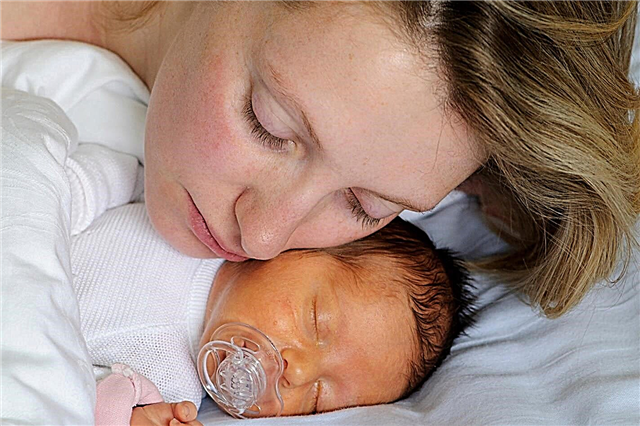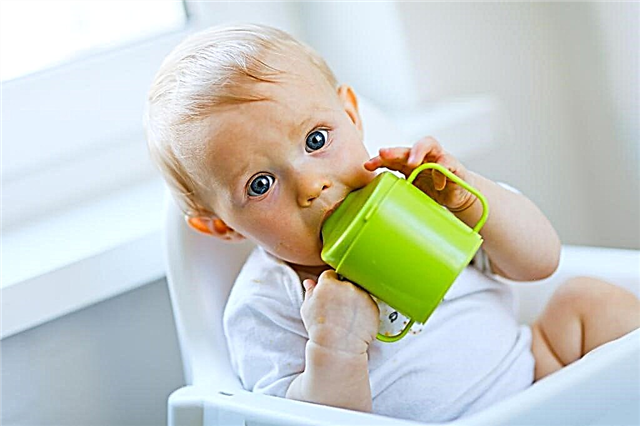
Most married couples in the course of their life together, sooner or later plan to have children. For some, this happens naturally, without medical intervention, while for others, as a result of problems with the reproductive system of one or both spouses, with the help of medical technologies. One of the most effective methods of solving the problem of infertility in our time is artificial insemination.
Features:
Disappointing statistics show that every second married couple in the world, to a greater or lesser extent, experience problems with conception. And contrary to popular belief that female infertility is much more common, only a third of such cases occur as a result of reproductive disorders in women.
Currently, three main technologies of artificial insemination are used to treat infertility:
- in vitro fertilization (IVF);
- intracytoplasmic sperm injection (ICSI);
- artificial insemination.


The choice of the method of artificial insemination is carried out by the reproductive physician on an individual basis. At the moment, according to numerous reviews, the most popular technology is IVF.
With IVF, conception occurs outside the mother's body, as it should occur with natural fertilization.
IVF is a rather complex manipulation, which requires the use of a large number of hormonal agents to be effective. Thanks to the intake of these drugs, the functional capabilities of the ovaries and pituitary gland are suppressed. During hormone therapy, it is important to closely monitor the changes occurring in the woman's body.

After receiving all the laboratory data and the final determination of the method of therapy, the woman is placed under the continuous supervision of a specialist. The dynamics of all changes in the patient's endocrine system, occurring as a result of the constant intake of hormonal drugs, is monitored using biochemical blood tests, which must be taken daily.
It should be noted that such careful monitoring by doctors is not justified in all cases. Most often, the entire course of preparation for the IVF procedure takes place on an outpatient basis.
This is followed by the second stage of IVF - this is the cultivation and subsequent collection of female biological material. As it was said, at the initial stage of preparation for the procedure, drug suppression of the patient's natural hormonal background occurs. After that, the specialist prescribes the intake of drugs that can actively stimulate ovulation. As a result, about fifty follicles in which the eggs are located can mature in the ovaries. Subsequently, they will become the biological material that will be needed for this procedure.


Every day, experts record an increase in follicles. For this, a woman undergoes an ultrasound examination of the ovaries. As soon as the moment comes when the follicles reach the size required for IVF, the woman is assigned a puncture. Of course, if you do not preliminarily anesthetize the place where the punctate was taken, then such a manipulation can cause quite unpleasant sensations. Therefore, in most cases, doctors use a mild form of general anesthesia when taking a puncture. To do this, before the procedure, the patient is injected into the vein of the drug, and after a while she falls asleep.
On average, anesthesia lasts no more than half an hour, and the procedure for taking a puncture itself takes 5-10 minutes.
Carrying out this manipulation requires a highly qualified specialist, since if the needle is inaccurately inserted, the ovaries or fallopian tubes can be damaged (punctured). All manipulation is visualized by an ultrasound machine or laparoscopy.

After the cells are removed, they are placed in an environment most suitable for further work with them.
If the manipulation goes well, then the woman can return home on the same day.
At the third stage of in vitro fertilization, the participation of the father of the unborn child becomes necessary - he needs to donate sperm in order to fertilize the female reproductive cell in an artificial environment. When the IVF specialist receives all the necessary biological materials, he proceeds directly to the fertilization procedure itself: male and female germ cells are placed in special test tubes, where they must merge.
When fertilization has occurred and the embryo begins to actively develop in the place of the mother cell, then for several days it must still be in an environment artificially created for it.

The final stage of IVF is the transfer of the fertilized cell directly into the uterine cavity. This manipulation also occurs under the influence of anesthesia. In one procedure, a woman can be "planted" from one to four embryos.
The term "cryotransfer" is sometimes used. This term means the transfer of fertilized eggs from the uterine cavity to the external environment (in special conditions) or the transfer of "frozen" ("cryo" - freeze) embryos into the uterine cavity.
During IVF, the patient is injected with an average of 1-4 fertilized eggs in order to increase the chances of a successful conception. All of them or some of them can be successfully implanted into the mucous layer of the uterus, but it is possible that all of them will leave the uterine cavity during the next menstruation. In this case, the woman will have to undergo the IVF procedure again.
But if pregnancy did occur, and several embryos, or even all four, were successfully implanted into the endometrium, then according to the testimony of a specialist or at the request of the patient, several of them can be removed from the uterine cavity and placed in artificial conditions specially created for them, in which they will be frozen according to a certain method.


The process of retrieving embryos back into the environment is called embryo reduction. This is done so that in case of an unsuccessful IVF attempt, it would be possible to implant frozen embryos. Thanks to the cryo-transfer technique, in case of an unsuccessful transplant, the woman will not need to undergo stimulation of the reproductive system again for the onset of ovulation - she will not need to inject numerous injections and drink pills. Also, the potential father will be able to avoid re-donating a sperm sample.
As already mentioned, there are cases where all the embryos introduced into the uterus took root, in this case the decision - to leave all or to extract the "extra", belongs to the woman. This nuance becomes the main argument of the opponents of IVF, who consider this bioethical aspect unacceptable both from the point of view of religion and in the right of any human being to life.
In frozen form, fertilized eggs are stored in a special cryostorage, where optimal conditions for their viable state are maintained. They can be stored in this way from several months to several years, depending on the wishes of the biological parents. This service is chargeable. Its cost depends on the duration and storage conditions of the embryos.
After the embryo transfer, the patient must be provided with complete rest for a certain time, after which she can go home.


The attending physician prescribes the woman who has previously undergone this procedure, taking drugs that have a positive effect on the state of the endometrium (uterine lining). In addition, she may be recommended to take sedatives, as well as drugs that reduce the contractility of the uterus.
In the next two weeks, it is extremely important for a woman to pay special attention to her physical and emotional state: to avoid excessive stress and stressful situations, and also to walk more. It would be ideal in this situation to take a vacation or go on sick leave.


After two to three weeks after the implantation of a fertilized egg, the woman undergoes an ultrasound examination, which can be used to assess the effectiveness of the procedure, that is, to confirm or deny the fact of pregnancy. If IVF is successful, the expectant mother should continue to take the drugs prescribed for her, but if none of the "planted" embryos could implant into the endometrium, then these cells will leave the uterine cavity with regular menstrual flow.
ICSI
This technology is an improved principle of in vitro fertilization.
With her, the emergence of the embryo does not occur arbitrarily in a test tube, but through an instrument similar to a long hollow needle.
ICSI is used in case of decreased or lack of sperm motility. In addition to this nuance, the ICSI procedure is an absolute repetition of IVF.

Intrauterine insemination
During intrauterine insemination, semen is injected directly into the uterine cavity of a woman during the ovulatory period using a special catheter.
This method is used when male germ cells, for some reason, are unable to reach the uterine cavity (for example, with low sperm motility or with excessive viscosity of the mucus of the cervical canal).

Indications
The artificial insemination procedure can be carried out in case of problems with conception, both in one of the partners, and in both. There are a lot of reasons for the appearance of such difficulties.
So, infertile are those couples who have not become pregnant during a year of regular sexual relations without using any contraception. This state of affairs undoubtedly requires referral to specialists in the field of reproductive health for subsequent examination and treatment. Of course, the very fact of non-pregnancy within a certain period of time is not an absolute indication for IVF.
As for the most common cases in which IVF is really indicated, these include:
- Polycystic ovary disease. This is a pathological change in the structure and function of the ovaries, resulting from violations in the cycle. The impetus for the development of such a disease is a failure in the production of estrogens and the formation of follicles and an increase in the concentration of androgens - male sex hormones, which leads to the appearance of many small cysts in the structure of the ovaries and, as a result, infertility.
- Obstruction or absence of fallopian tubes.
- Endometriosis A disease in which the cells of the endometrium, the mucous layer of the uterine wall, grow outside of it.
- Pathologyaffecting the quality of a man's sperm.
- Infertility unexplained etiology.


Not so long ago, in the world clinical practice, it was decided to carry out infertility therapy (which sometimes took many years) to women with various conservative methods: medical treatment with hormonal drugs, physiotherapy, massage, spa treatment, etc.
Artificial insemination in such a situation was regarded as an extreme option, so women turned to specialists in this area for help when they were already quite adult ladies (in terms of fertility). This approach is absolutely erroneous, since at this age the probability of a successful outcome of the procedure is reduced several times.


In our country, there are enough highly qualified specialists dealing with the problems of infertility, to whom sometimes childless spouses make an appointment several months in advance.
Pros and cons
The main task of artificial insemination is the birth of a healthy child, therefore, if this goal is achieved, then all the disadvantages of such manipulation are leveled. According to statistics, more than a third of artificial insemination cases end in pregnancy. However, it should be borne in mind that this is a rather complex technology, which can also have consequences for the patient's health. A woman should have as complete an understanding of the possible risks as possible, so that consciously, after weighing all the pros and cons, she could make a final decision on the advisability of carrying out such a manipulation.
In case of successful embryo replanting, there is a high probability that several embryos will be implanted into the uterine mucosa at once and multiple pregnancies will develop. Therefore (at the request of the woman) it is possible to reduce "extra" embryos, which, in turn, can cause spontaneous abortion. If you leave all the embryos, then the risk of hypoxia (oxygen starvation) and premature birth of children increases.

What influences a successful outcome?
The percentage of the likelihood of developing pregnancy as a result of artificial insemination is influenced by the following factors:
- age of potential parents;
- the cause of infertility in a childless couple;
- ovarian puncture results (characteristics of oocytes and their number);
- the quality of the semen of a potential father;
- the number of embryos obtained as a result of the fusion of male and female germ cells in laboratory conditions that are capable of development;
- the period of infertility of the couple;
- the state of the uterine mucosa at the time of embryo replanting (presence or absence of scars, inflammatory processes, etc.);
- the number of previous attempts at the IVF procedure;
- the degree of qualification of doctors in a particular medical institution;
- the correctness of the preparatory stage;
- the presence of hereditary diseases;
- the lifestyle of potential parents and their bad habits;
- the presence of acute inflammatory diseases or not fully treated chronic at the time of embryo replanting

Ethical and legal aspects
In addition to exclusively medical restrictions on artificial insemination, there are legal regulations that require compliance. For example, being in an official marriage, the consent of the spouse is required for IVF, especially if the donor sperm will be used as male biological material. This is due to the fact that children born in a legal marriage automatically acquire their mother's spouse as a father. At the same time, the father is fully responsible for the upbringing of this child, regardless of the true relationship.
Therefore, if the husband, due to ethical, religious or any other considerations, protests against artificial insemination, then the solution to this problem will be the refusal of the spouses from the procedure if the wife cannot persuade her soul mate.
In extreme cases, a woman can divorce and participate in this program as a free lady.

A man who has become a sperm donor cannot get personal information about a woman who underwent artificial insemination using his biological material. In relation to a child who was born in this way, he does not bear material obligations.
For a long time, some childless married couples do not dare to resort to artificial insemination due to religious and ethical considerations. Leading world religions (Christianity, Islam, Buddhism) accept such a "virgin birth" as the most extreme measure. In addition, the use of donor sperm by the spouses, the conception of a single woman and the reduction of embryos in the case of multiple pregnancies are considered unacceptable. Also, Christianity categorically does not accept surrogacy.


How the IVF procedure works, see below.



